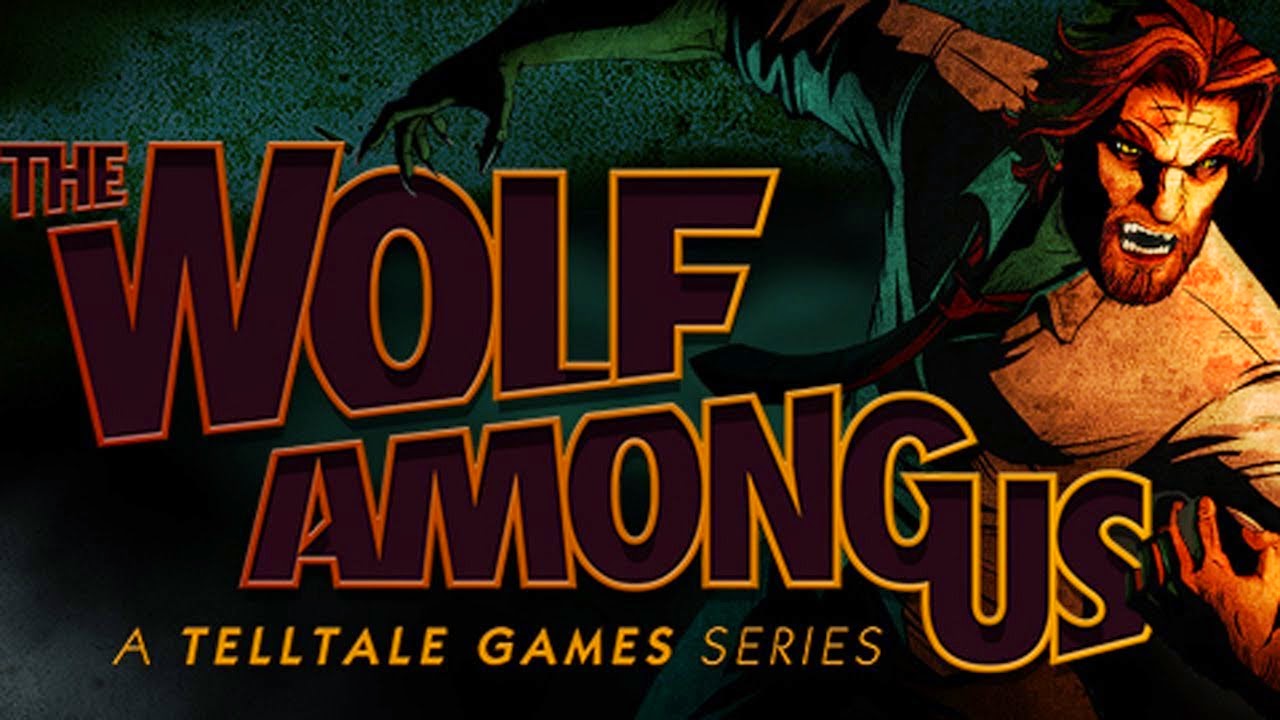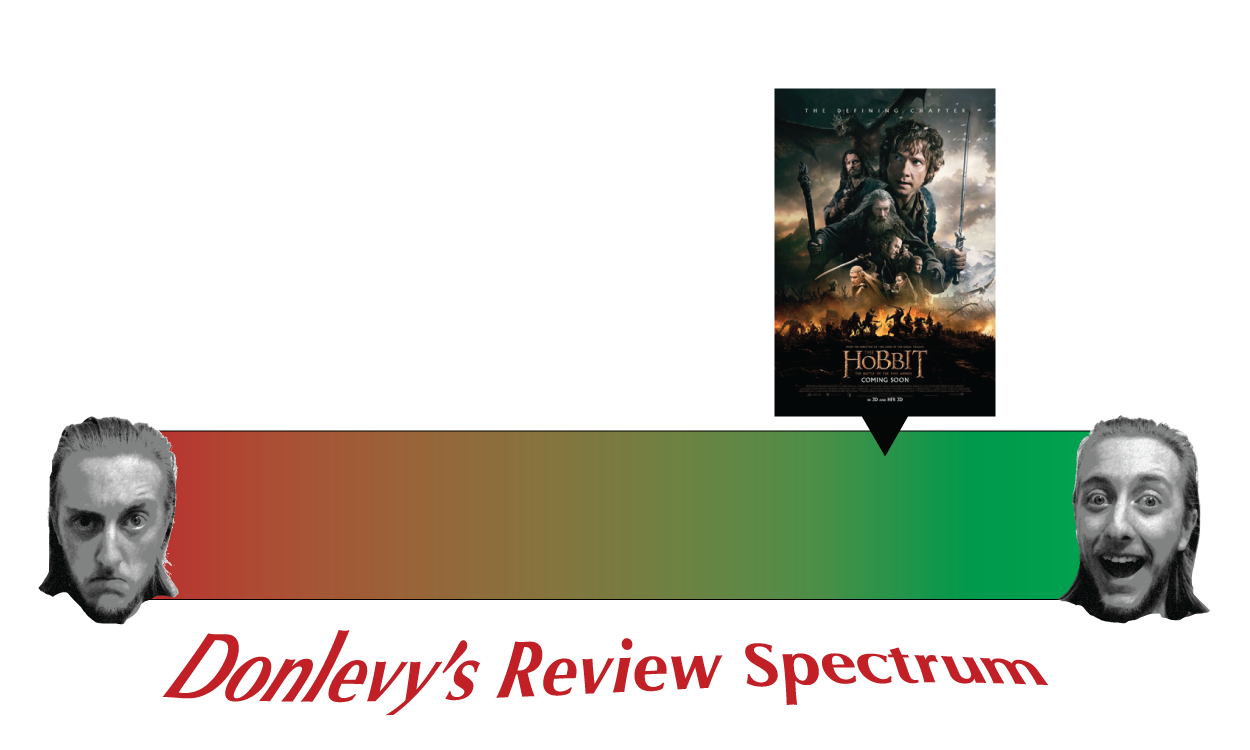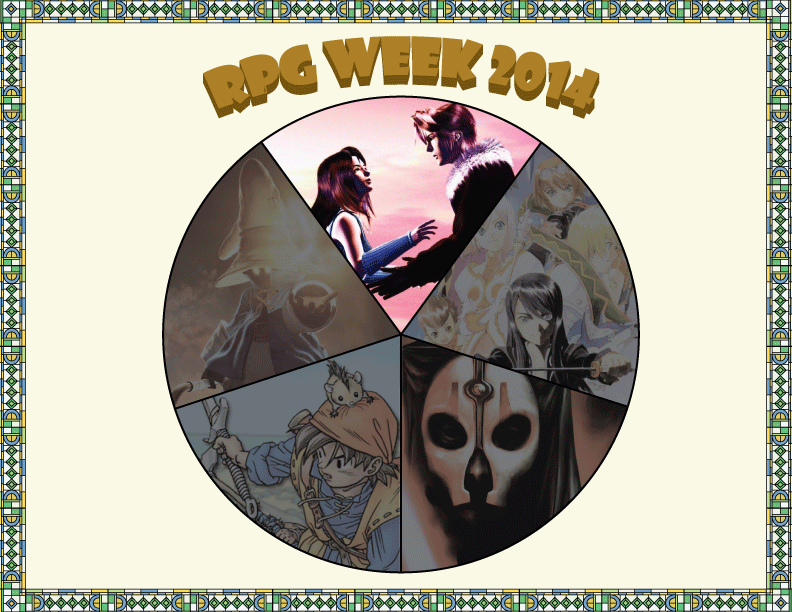Look out, it's that time of the year again! No not a holiday, silly, 'tis the season of opinions! The time where the vast hoards of the internet gather 'round to list off in an orderly and redundant fashion their favourite video games of the year. So what am I doing differently?
Very little!
Many sites have their awards, and the rest have their lists. So I'm doing a little of both! 10 of my most wholeheartedly adored and favourite games of the year, plus several honourable mentions with their own special and not-yet-trademarked Donlevy Awards! How many people will disagree with my choices? Probably everyone! But it is, as always, my completely subjective list. And of course, I sadly didn't have the chance to try every game this year, so if you don't see a favourite on this list, I might have not played it yet!
[And just for the record, popular and acclaimed games I have not played this year include: South Park: Stick of Truth, Donkey Kong Country: Tropical Freeze, Far Cry 4, Dragon Age: Inquisition, Bayonetta 2, a bunch of 3DS stuff like Pokemon and Bravely Default, This War of Mine, Transistor, and several others...]
Good. Now onto the one's I have played. Beginning with the Honourable Mentions!
Donlevy Award for First Rage-Quitting Card Game:
Hearthstone: Heroes of Warcraft
I really, really wish I was better at Hearthstone. Alas, I am not. Despite my lack of skill, however, I have to give props to Hearthstone for its accessible, free-to-play nature with a vibrant and easily manageable interface, and for its addicting and deep gameplay.
Donlevy Award for Lion Around:
SMITE
I must admit that, despite some very lingering issues, I find SMITE to be the only MOBA that I can actually enjoy. Its use of third-person action is more engaging for me, and the aesthetic is strong indeed, taking multiple gods and goddess' from different cultures and giving them a big dose of tongue-in-cheek personality.
Donlevy Award for Terrible Horrible Nightmare Inducing Images of Despair and Disgust:
The Binding of Isaac: Rebirth
A "rouge-like" dungeon crawler with a very...unique aesthetic. The original Binding of Isaac was released a few years ago as a Flash version, but Rebirth improves upon every aspect of what made Isaac so memorable. Loads of new content and an updated engine make Rebirth quite a fun package, with randomized items and dungeons that make for a consistently fresh game.
Threes
If you haven't played Threes, you might have played 2048, or something like it, instead. Threes was the very original, and I believe the best one. Unlike similar knock-offs, Threes has a delightful and charming aesthetic that makes for a relaxing little brain game. By swiping together numbers to create larger numbers, you aim to make the largest set of numbers possible while maintaining the space to do so, with limited movement. Threes was my mobile addiction of the year.
Number 10:
Five Nights at Freddy's
The first on the list goes to a game that I think might actually be equal parts fun to watch and play. The now infamous Five Nights at Freddy's puts you in the role of a security guard tasked with the night shift at Freddy Fazbear's Pizza, where the animatronics are out to stuff you into an empty animatronic suit. How pleasant! You must manage camera feeds and doors in order to stay alive the five nights, all with a limited power supply. Failing to carefully account for each animatronic will result in a jumpscare and a game over.
Five Nights at Freddy's not only quickly becomes a fast-paced test of both management and reflex, but of your own anxiety and composure. There's an eerie and unsettling atmosphere that only amplifies the experience. And before you really learn the game, jumpscares can seem like they appear out of nowhere, and when you do finally recognize patterns, it becomes all about how fast you can work under pressure of an impending jumpscare. It's really a simple game at its core, but I bow to its execution. Watching others play this is also a particular highlight.
Number 9:
Wolfenstein: The New Order
Easily the most enjoyable shooter I played this year (if you don't count Shadow Warrior, which technically came out last year), Wolfenstein: The New Order is damn good at what it does, and has a great art design and surprisingly strong narrative to top it all off. Nazi-killin' doesn't get much better than this, with Wolfenstein smartly improving or foregoing conventional shooter tropes of the past few years and looking back to more over-the-top iterations of yore. It's rare that a game can manage both stealth and action the way it does, but New Order does it with glee, sometimes doing so as a giant middle finger to mediocre and dull modern-day shooters. Wolfenstein: The New Order is a fine example of a game that combines shooter tropes both new and old, with great results.
Number 8:
Octodad: Dadliest Catch
I didn't really know what to think about Octodad: Dadliest Catch right away...but it certainly doesn't take long to grow on you! Octodad is one of those games where the challenge is in the controls -- on purpose (like Surgeon Simulator). It's an amusing and comical game with plenty of in-jokes to catch (no pun intended), and it is very inviting in its charm and oddball humour. And fighting the controls make for some surprisingly gratifying and satisfying moments! It can certainly be infuriating at times, and it might not be the longest game on this list, but for a budget title Octodad: Dadliest Catch is a fun, notable and memorable little game!
Number 7:
Middle-Earth: Shadow of Mordor
And let's be honest here: everyone should play this game as Lithariel. She's awesome!
Number 6:
Mario Kart 8
Number 5:
The Wolf Among Us
Number 4:
The Legend of Korra
Playing as Korra feels great, and the tight and responsive controls make for excellent and satisfying combat that I know fans of the show could get a kick out of. The graphics do a good job of emulating the art style of Korra, and there's even some new animations! While you can't really explore the different locations so much outside the beaten path, their presence is really appreciated, and it's just cool to see these places realized in such a way. The different "talisman" you can equip change how you engage in combat, and makes for a neat tactical edge before a chapter. There's lots of things to either find in the levels or buy at the shop. Even Naga, Korra's polar bear-dog companion has a part, and her sections are neat little diversions that, while sadly on-rails, give a nice sense of speed, and will test your reflex. And when you complete the story for the first time, you even unlock a cool Pro-Bending mode! Honestly, for what it is, I'd say the game is stellar! If you can temper your expectations (it's not a full priced game) I think fans of the show in particular would love it.
I must say though, this kind of game does make me want a full-priced, open-world kind of title in the Avatar universe. I think that would be awesome! Ah, but what do I know.
Number 3:
Come on guys, Hyrule Warriors was bound to be on the list! It's brilliant combining of The Legend of Zelda and Dynasty Warriors makes for a fantastic and content-rich experience. I stand by with what I said in my review: it's not for everyone. But screw that, this is my list! There's so much personality and tribute found in Hyrule Warriors, and what a lovely thing it is to play as so many Zelda characters, each one unique, and some with entirely different weapon styles! I have not yet gotten bored of the combat and gameplay, I can say that with certainty. It's still as engrossing and satisfying as the first time I played it. And with new downloads still on the horizon, and not one but two Adventure mode maps I have yet to complete, I have no doubt I will be playing Hyrule Warriors for a long time yet!
Number 2:
Yup. You can't argue with Smash Bros.! Seeing not only one, but two Smash games this year is quite a feat! Having Smash on the go for the first time is a completely new and welcome change of pace, and it pulled it off rather well, despite the limitations of a handheld. Of course, the main course is undoubtedly still the Wii U version, and it's packed with content! A new Smash Tour board game mode, returning stadium modes now with co-op, the Orders modes, insane custom Mii Fighters and custom Characters, and an intriguing (but limited) Stage Builder make up the bulk of new features, but then there's also amiibo integration, returning Classic and All-Star mode (also co-op), new Events Mode both in solo mode and co-op, and tons of Trophies, equipment, and music to unlock. Damn! And of course, there's your unadulterated core Smash experience, now better than ever. The gameplay is completely refined, making a balance between the speed of Melee and the slower-paced Brawl to fantastic results. There's loads of characters to play as, and every one feels cleaned up and improved in noticeable and substantial ways. And it looks gorgeous. I tell you, Smash Bros. is still one of the best couch multiplayer games. Like Mario Kart, the core formula may not have changed too much, but the refinement in gameplay truly leaves a lasting mark of improvement. Getting friends and family together to Smash it out has never felt better, and this version has already proven to be a hugely popular one.
Also: MEGA MAN.
Number 1:
THE UPSET!
Ah...but really, it shouldn't be. Shovel Knight is a wonderful, wonderful game. And more than that, it's a game that makes me smile at the mere mention of the title. It's a game that I am so, so happy was made by such a talented group of people. Yacht Club Games made something absolutely special in Shovel Knight, and damn if it isn't my favourite game I played this year.
So much about Shovel Knight feels like a clever homage to the side-scrollers of old, and at the same time the game forges (erhm...shovels) its own path by not only embracing classic-style gameplay, but learning from it. You can feel the Mega Man, Castlevania, and Super Mario here, but you also feel something distinct and unique, and this glorious blend is what makes the core of Shovel Knight shine bright. Controls are tight and responsive. Challenge is paced well and relies on the player, rather than a reliance on cheap tricks. The aesthetic is simply delightful, and that soundtrack by Jake Kaufman (with collaboration from Manami Matsumae!) is amazing. The flow and progression make for great pacing. The unique and adoring humour is totally welcome. And the game boasts some downright superb level and stage design. It's an astoundingly well-rounded game, and I'd recommend Shovel Knight to everyone.
Shovel Knight is simply brilliant. My game of the year.
I must say though, this kind of game does make me want a full-priced, open-world kind of title in the Avatar universe. I think that would be awesome! Ah, but what do I know.
Number 3:
Hyrule Warriors
Number 2:
Super Smash Bros. for Nintendo 3DS & Wii U
Yup. You can't argue with Smash Bros.! Seeing not only one, but two Smash games this year is quite a feat! Having Smash on the go for the first time is a completely new and welcome change of pace, and it pulled it off rather well, despite the limitations of a handheld. Of course, the main course is undoubtedly still the Wii U version, and it's packed with content! A new Smash Tour board game mode, returning stadium modes now with co-op, the Orders modes, insane custom Mii Fighters and custom Characters, and an intriguing (but limited) Stage Builder make up the bulk of new features, but then there's also amiibo integration, returning Classic and All-Star mode (also co-op), new Events Mode both in solo mode and co-op, and tons of Trophies, equipment, and music to unlock. Damn! And of course, there's your unadulterated core Smash experience, now better than ever. The gameplay is completely refined, making a balance between the speed of Melee and the slower-paced Brawl to fantastic results. There's loads of characters to play as, and every one feels cleaned up and improved in noticeable and substantial ways. And it looks gorgeous. I tell you, Smash Bros. is still one of the best couch multiplayer games. Like Mario Kart, the core formula may not have changed too much, but the refinement in gameplay truly leaves a lasting mark of improvement. Getting friends and family together to Smash it out has never felt better, and this version has already proven to be a hugely popular one.
Also: MEGA MAN.
Number 1:
Shovel Knight
THE UPSET!
Ah...but really, it shouldn't be. Shovel Knight is a wonderful, wonderful game. And more than that, it's a game that makes me smile at the mere mention of the title. It's a game that I am so, so happy was made by such a talented group of people. Yacht Club Games made something absolutely special in Shovel Knight, and damn if it isn't my favourite game I played this year.
So much about Shovel Knight feels like a clever homage to the side-scrollers of old, and at the same time the game forges (erhm...shovels) its own path by not only embracing classic-style gameplay, but learning from it. You can feel the Mega Man, Castlevania, and Super Mario here, but you also feel something distinct and unique, and this glorious blend is what makes the core of Shovel Knight shine bright. Controls are tight and responsive. Challenge is paced well and relies on the player, rather than a reliance on cheap tricks. The aesthetic is simply delightful, and that soundtrack by Jake Kaufman (with collaboration from Manami Matsumae!) is amazing. The flow and progression make for great pacing. The unique and adoring humour is totally welcome. And the game boasts some downright superb level and stage design. It's an astoundingly well-rounded game, and I'd recommend Shovel Knight to everyone.
Shovel Knight is simply brilliant. My game of the year.















































